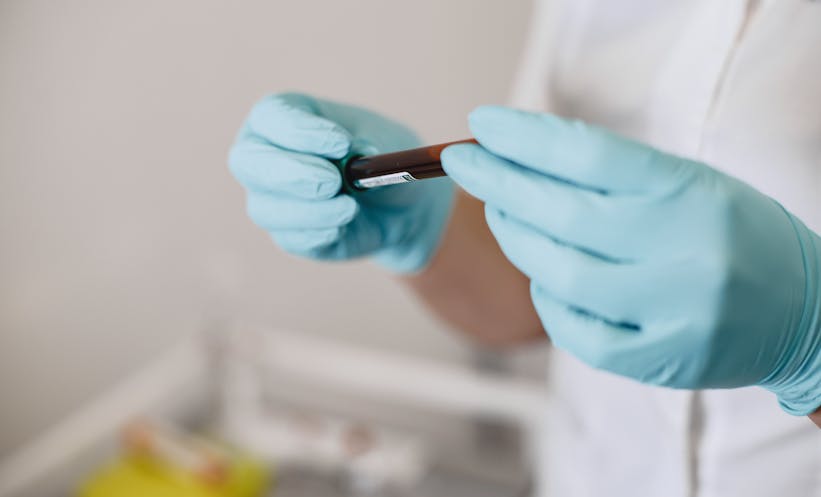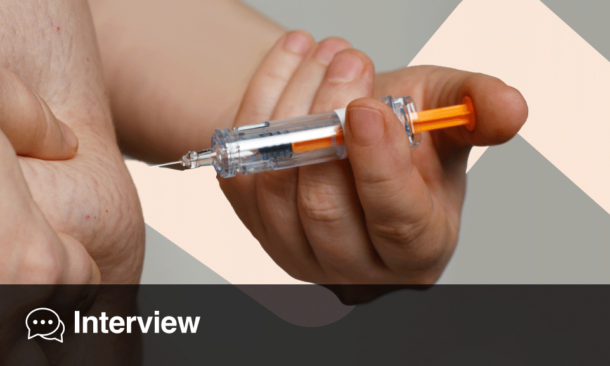INTRODUCTION
This commentary reflects our personal approach to the treatment of idiopathic inflammatory myopathies (IIM), also commonly referred to as myositis. Despite substantial ongoing research, there remains a large gap in our understanding of the pathogenesis, variability of organ involvement, predictors of response to treatment, and, consequently, in optimising outcomes for an individual patient. Given the rarity of IIM, it is understandable that there are few randomised controlled or head-to-head trials to draw upon when making treatment decisions. Furthermore, myositis spectrum disorders (including polymyositis, dermatomyositis, overlap syndrome, antisynthetase syndrome, immune-mediated necrotising myositis, inclusion body myositis, and juvenile dermatomyositis) are heterogeneous, which makes a unified approach to treatment challenging.
This review is influenced by an awareness of the research as it currently stands and our approach to integrate these study results into clinical practice. This is not intended to be a comprehensive guideline but, instead, a clinically focussed discussion supported, where possible, by evidence. This commentary is limited to the cases of adult-onset IIM that are responsive to immunosuppression, and the reader is, therefore, directed elsewhere for a discussion on the management of juvenile dermatomyositis and inclusion-body myositis.1,2
IMPORTANT CAVEATS
Non-Pharmacological Treatment
It would be remiss not to highlight the role of non-pharmacological treatments at all stages of the management of IIM. For example, exercise regimens tailored to the patient’s functional level, meticulous nursing care, including the management of aspiration risk if present, as well as access to psychological and social support are of utmost importance.
Accurate Diagnosis
An accurate diagnosis of IIM is essential to ensure that other disorders, including those less readily modified by immunotherapy, are not missed. Late presentations of inherited or acquired myopathies can closely mimic IIM, as can other systemic causes of the disorder, such as endocrinopathies or drug toxicity.3 In particular, it is important to recognise that a presentation of sporadic inclusion body myositis, an IIM clinical subtype that affects older patients and can mimic polymyositis in the early stages, unfortunately does not respond to immunotherapy.2
Paraneoplastic Disease
It is also important to stress the association of IIM, particularly dermatomyositis, with a range of malignancies; study results have shown an approximate prevalence of cancer in 10% of adult- onset IIM cases.4 In such cases, treatment of the muscle disease or other associated organ involvement is usually unsatisfactory until the underlying malignancy is identified and treated as effectively as possible.
Infection Risk
All patients are screened for latent or occult infections and appropriate vaccinations are administered as early as possible to minimise potential harm from treatment.
Extramuscular Manifestations
IIM are systemic conditions with a range of potential extramuscular manifestations, including dermatologic, pulmonary, cardiovascular, and articular conditions. In some patients, these manifestations are the predominant feature of their condition and treatment should be tailored appropriately.
THE TREATMENT TARGET
Pharmacological treatments at a biologic level are intended to arrest immune-mediated end-organ damage to allow restitution and repair of the affected tissues. At a clinical level, the aim is to halt progression of the significant disability that almost invariably accompanies these conditions and maximise the recovery of function as quickly as possible. It is from these principles that we suggest a model of treatment structured as remission induction and remission maintenance, similar to the approach used to treat antineutrophil cytoplasmic antibody-associated vasculitis.5 Without effective treatment, patients can quickly develop permanent damage, such as fatty infiltration of muscles or pulmonary fibrosis.
A large unmet need in rheumatic autoimmune disease is predicting which patients will respond to particular therapies; the concept of disease ‘pathotypes’ is gaining traction to better target interventions.6 However, in current clinical practice, it is not uncommon to need to trial a number of different (second or third-line) agents, either sequentially or in combination, before the optimal response is achieved. It is essential to have in mind a measure of response; relying solely on serial measurements of muscle enzymes is not appropriate. We carefully measure a patient’s strength at each clinic appointment and have found that changes in their physical function are the single most useful guide to treatment decisions. The International Myositis Assessment and Clinical Studies (IMACS) Group criteria are used to standardise the assessment of response to treatment.7
INDUCTION TREATMENTS
Although there are no associated placebo-controlled trials, corticosteroids remain the backbone of our induction treatment because they can provide rapid responses and have a familiar, if not ideal, side effect profile. In particular, we carefully assess the risk of steroid-induced osteoporosis and appropriateness of antiresorptive therapies in every patient. We use doses of 0.5–1.0 mg/kg prednisolone at induction and consider pulsed parenteral doses initially in patients who are severely ill. The high oral doses are usually continued for 4–6 weeks to establish disease control before starting a tapering regimen. A typical taper involves patients treated with a dose of ≤20 mg prednisolone 2–3 months after the initiation of treatment and <10 mg at 6 months.
Overall, >80% of patients will respond to corticosteroids alone, but the majority do not return to full strength when treated with monotherapy. We always aim to include a second induction agent from the outset to minimise the cumulative corticosteroid dose and establish a more appropriate medium-to-long-term treatment regimen.8 The treatments we would consider include methotrexate, azathioprine, mycophenolate, tacrolimus, or cyclosporin. Cyclophosphamide and intravenous immunoglobulin can be used for induction treatment in cases of severe disease features, including certain extramuscular end-organ involvement, profound muscle weakness, and dysphagia, and/or corticoresistant cases. An additional agent that plays a role in induction treatment is rituximab.
Methotrexate
Retrospective studies have reported response rates to methotrexate of approximately 80%, even in patients who initially failed on corticosteroid treatment.9 The advantages of methotrexate therapy include a convenient dosing schedule, extensive knowledge of the side effect profile, and the option to continue treatment long-term when necessary as maintenance therapy. Methotrexate is likely to take weeks to reach its full effect and, therefore, we usually administer it to patients with less severe disease activity who are likely to respond well to corticosteroids. We aim for doses between 20 and 30 mg weekly, either orally or subcutaneously.
Azathioprine
One small prospective study of azathioprine showed improved clinical outcomes and reduced corticosteroid requirements.10 In our experience, it can take months to reach a clinical response and there is a significant incidence of side effects. Thiopurine methyltransferase levels are measured before starting azathioprine with a typical maintenance dose of 2–3 mg/kg. Again, we use azathioprine in patients with relatively mild disease and it has the advantage of being an appropriate maintenance treatment if successful and well tolerated. Azathioprine is also one of only a few potentially effective therapies that can be continued safely throughout pregnancy.
Cyclophosphamide
Cyclophosphamide is reserved for patients with severe or life-threatening disease manifestations; the drug can provide rapid and significant response rates but has a substantial side effect profile, including serious infection, concerns about iatrogenic malignancy, and an effect on fertility. The Euro-Lupus or CYCLOPS medication regimens are commonly selected and continued for approximately 6–10 treatments;11,12 patients should also receive Pneumocystis jirovecii antifungal drugs prophylactically. Cyclophosphamide is used more frequently in patients with interstitial lung disease as there is good evidence for its efficacy in lung involvement associated with connective-tissue disease.
Intravenous Immunoglobulin
Intravenous immunoglobulin therapy can be a very effective immunomodulatory induction treatment and usually has a rapid onset of action. It is a scarce resource and, therefore, we typically only choose to use it first-line if other options are clearly inappropriate (for example, in cases with concurrent sepsis or pregnant women). Two notable trials demonstrated a response in the large majority of patients and most patients with oesophageal involvement experienced improvement, often a relatively resistant disease manifestation.13 A total dose of 2 mg/kg is given over 2–5 days, which can be repeated at 4-weekly intervals if necessary.
OUTCOMES OF INDUCTION TREATMENT
There are three possible outcomes from induction treatment: a) the patient achieves a successful and sustained remission, b) they achieve a remission only to have a disease relapse, or c) they are refractory to induction treatment. Patients who achieve sustained remission progress to a treatment strategy that maintains disease control; if suitable, continuation of the induction treatment into maintenance treatment is preferable because it avoids the risk of disease relapse by changing treatment. Patients treated with other induction regimens are typically switched to either methotrexate or azathioprine once their induction treatment is concluded as we have the greatest experience with these drugs long-term. Approximately one-third of patients will have a monophasic illness and be able to withdraw from all treatment; however, the majority will require longer periods of immune-targeted treatment and the minimum dose of medications necessary to maintain remission is used, with emphasis on minimising and ideally stopping corticosteroid treatment.
Treatment decisions in patients who relapse are difficult to summarise because the potential approaches vary considerably. In general, if relapse occurs early after the initiation of induction therapy on relatively large doses of corticosteroids (i.e. >20 mg/day prednisolone), we treat the patient as a refractory case and use alternative induction agents. If relapse occurs at doses of corticosteroids below this level then options include adjusting the existing medications, changing to an alternative maintenance agent, or using combination treatment whilst typically employing an increased dose of corticosteroids to regain disease control. At this stage, we may consider other medications that we reserve as second-line therapies because there is less evidence on their efficacy or less familiarity with their use long-term; these include the following treatments.
Mycophenolate
A number of retrospective studies detail success with mycophenolate, including in disease refractory cases.14 We aim to achieve a dose of 1–3 g in divided doses daily (different preparations of mycophenolate have different dosing recommendations). Mycophenolate is an attractive choice in patients with interstitial lung disease since it avoids the familiar quandary of the patient on methotrexate whose lung disease progresses.
Calcineurin Inhibitors
Calcineurin inhibitors, including cyclosporine and tacrolimus, have displayed evidence of efficacy and, in particular, there are promising data for tacrolimus in a group of patients with interstitial lung disease related to antisynthetase syndrome.15 We use oral doses of cyclosporine ranging 2.5–4.0 mg/kg. Tacrolimus is prescribed at a starting dose of 4 mg in two divided doses (0.04–0.08 mg/kg/day) and a maintenance dose of 4–10 mg daily (0.10–0.25 mg/kg/day), with monthly trough drug levels. Patient blood pressure should also be monitored, and these agents can be used carefully in patients with comorbid renal failure where other treatments are inappropriate.
If the patient does not respond adequately to the initial choice of induction treatment or relapses early after treatment, we consider them treatment refractory. The management choices for these patients are, again, potentially numerous and largely unsupported by rigorous evidence. In any patient with treatment refractory disease, it is essential to revisit the evidence that supports their working diagnosis, asking the question: is it possible they, in fact, have a late-presenting inherited myopathy or an alternative diagnosis, such as paraneoplastic myositis? If satisfied that the patient still has a primarily autoimmune process, then an alternative induction regimen may be appropriate; the treatment choice is between the aforementioned agents but would also increasingly include rituximab.
Rituximab
A randomised trial of rituximab in patients who were refractory to corticosteroids and at least one other immunotherapy agent has been conducted. Although the primary endpoint (time to clinical improvement between two trial arms) was not met, taken collectively, 83% of patients met the definition of improvement during the trial period.16 Post-hoc analysis suggested that the presence of antisynthetase antibodies or anti-Mi-2 (a myositis-specific antibody associated with a dermatomyositis phenotype) was associated with a more favourable response.17 In a retrospective case series and a Phase II trial of antisynthetase syndrome patients with interstitial lung disease, there was an improvement in muscle and/or pulmonary involvement in the majority of patients.18,19 As per the rheumatoid arthritis regimen, two doses of 1 g rituximab (750 mg/m2 to a maximum of 1 g) are administered 2 weeks apart.
Biologic or Experimental Treatments
Although there is much interest in targeted therapies, in particular biologics in the treatment of IIM, there is currently little supportive evidence and we consider these a third-line therapy; as a result, these treatments are only to be used in exceptional circumstances. The published results from the use of anti-tumour necrosis factor-alpha agents are not convincing, although there may be some activity in patients with resistant calcinosis. In addition, the data for interleukin-6 pathway blockade is sparse, although trials are ongoing. T cell coreceptor blockade is an attractive potential treatment target; in a Phase IIb study of abatacept (an anti-CTLA4 antibody) in treatment refractory polymyositis and dermatomyositis, 8 out of 19 patients achieved the definition of response.20 There is Phase Ib data that support the use of Type-1 interferon blockade with sifalimumab, although research into this product in myositis was subsequently terminated during a Phase II study.21 In a study of patients treated with anakinra (an interleukin-1 receptor antagonist) for 12 months, 7 out of 15 participants had a clinical response.22 There are also case reports only for janus kinase inhibition, although a trial of tofacitinib is ongoing.23,24 Lastly, there are registered ongoing trials into basiliximab (an anti-interleukin-2 receptor antibody), interferon-kappa, belimumab (an anti-B cell activating factor antibody), h5G1.1-mAb (a monoclonal antibody targeting the complement terminal attack complex), MEDI7734 (targeting plasmacytoid dendritic cells), IMO-8400 (a toll-like-receptor 7–9 antagonist), and BAF312 (a sphingosine 1-phosphate receptor modulator inhibiting lymphocyte egress from lymph nodes). Our attributed third-line status of biologics may, therefore, change in the near future.
CONCLUSION
Therapeutics in autoimmune connective tissue disease is a changing landscape. Options for more effective treatments and the understanding of which patients are likely to respond to particular therapies will evolve greatly over time. We hope that this review provides a useful framework for the application of currently available treatments for these challenging conditions.









